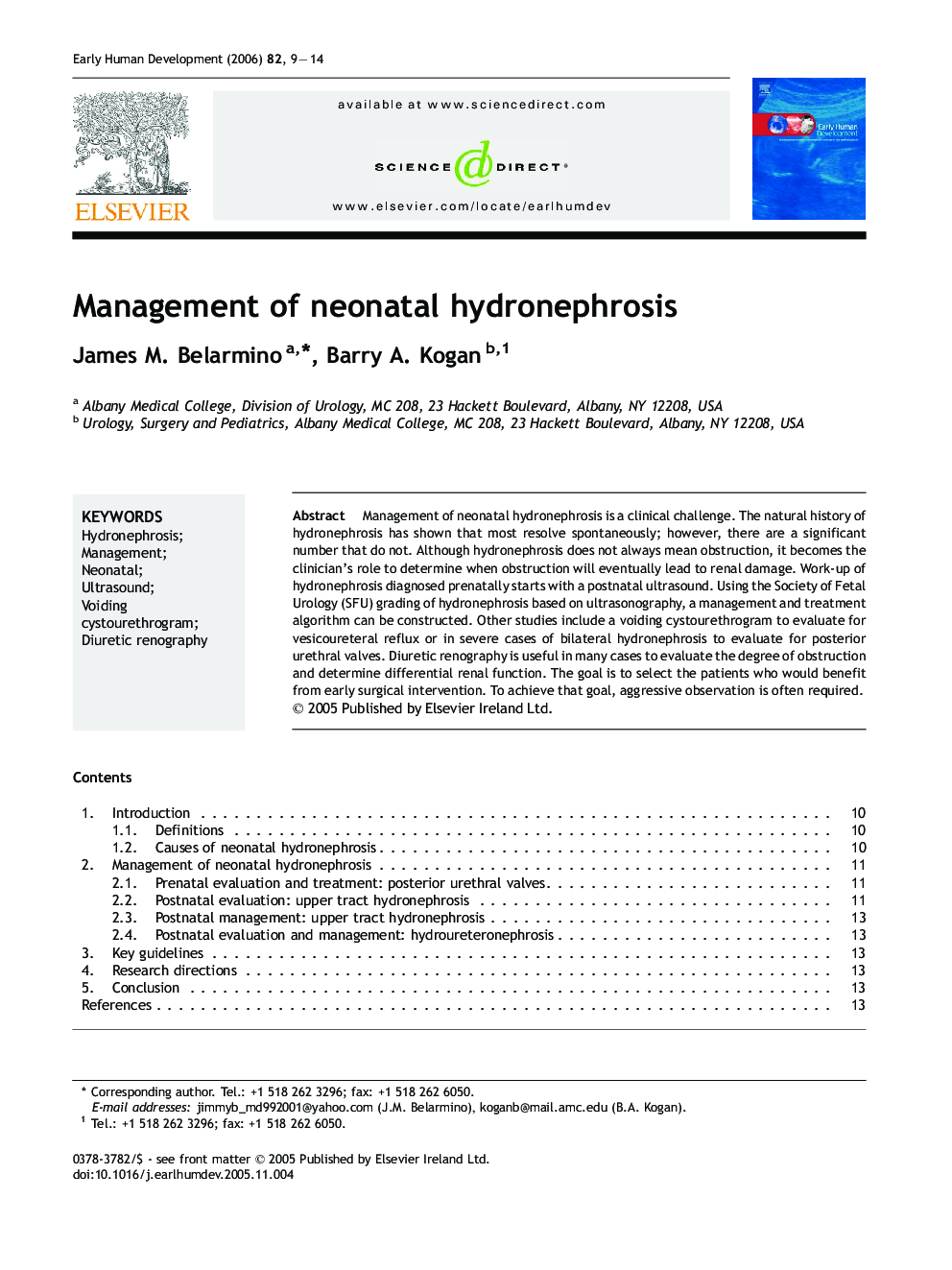| Article ID | Journal | Published Year | Pages | File Type |
|---|---|---|---|---|
| 3917981 | Early Human Development | 2006 | 6 Pages |
Management of neonatal hydronephrosis is a clinical challenge. The natural history of hydronephrosis has shown that most resolve spontaneously; however, there are a significant number that do not. Although hydronephrosis does not always mean obstruction, it becomes the clinician's role to determine when obstruction will eventually lead to renal damage. Work-up of hydronephrosis diagnosed prenatally starts with a postnatal ultrasound. Using the Society of Fetal Urology (SFU) grading of hydronephrosis based on ultrasonography, a management and treatment algorithm can be constructed. Other studies include a voiding cystourethrogram to evaluate for vesicoureteral reflux or in severe cases of bilateral hydronephrosis to evaluate for posterior urethral valves. Diuretic renography is useful in many cases to evaluate the degree of obstruction and determine differential renal function. The goal is to select the patients who would benefit from early surgical intervention. To achieve that goal, aggressive observation is often required.
